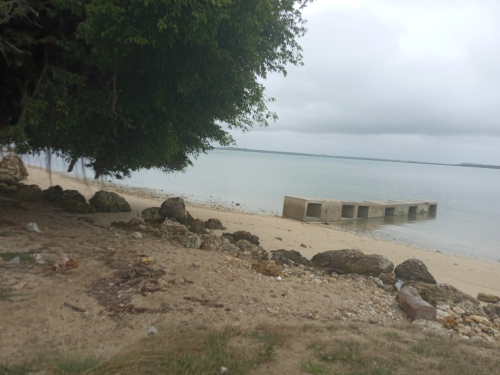
14 October 2022, Nukualofa Tonga - Community actions, cooperation and resiliency across agency and community groups involved in the “Building a Resilient Tonga” celebration reflect the community’s commitment to local development.
These were sentiments shared during the community outreach and the field trial of developed impacts Analysis (iA) methodology in Tonga in 2021. The feedback was sought during the Climate Action week from 18-23 September 2022.
Tonga is the first of four countries that cooperated with the field testing of an impacts analysis methodology as part of the European Union funded Global Climate Change Alliance Plus (GCCA+) Scaling Up Pacific Adaptation (SUPA) project.

The Impact study on Tongatapu focused on coastal protection measures built within at least the last five to six years and began with profiling the recent history of various climate change adaptation projects.
Since 2013, coastal protection has been a predominant adaptation action along the Tongatapu coastline. Records showed that 10% of the island’s population live adjacent to the coastal protection measures implemented in the last six to 10 years, covering 11.6% of the coastline.
During this period, at least 736 families benefited from an array of adaptation actions, awareness raising, capacity building and community outreach.
Four types of structural interventions were built along the east and western coastlines of Tongatapu. These consist of 20 semi-permeable groynes in front of the villages of Talafo’ou and Makaunga, 10 detached breakwaters east of Manuka village, a rock revetment at Navutoka village, and a rock barrier at Ahau village. Ahau on the western Tongatapu coastline and Talafo’ou to Makaunga on the eastern Tongatapu coastline were selected as the focal sites for the field testing of the iA Methodology and it’s set of impact assessment tools.
This impact methodology was applied on this set of coastal protection structural measures to test the impact such interventions for both people and environment.
.jpg)
Perspectives gained in assessing the impact of built coastal structures to protect its coastline in selected areas suggest medium positive impact on the communities.
Results from the social and behavioural change analysis showed that most participants considered that the infrastructure had helped protect the coastline, however there was a desire for further strengthening.
Such preliminary data collected from the social survey of 109 households in October 2021, and the focus group sessions with 28 individuals in November 2021, provided a baseline for future surveys to further examine impacts.
Spatial analysis of Geographical Information System data layers for mangrove cover and rehabilitation-replanting activities were also done in mapping change detection along the coast. Field application of the impact methodology have shown its potential to get data for trialled coastal protection designs in place that are meant to protect people and properties.
However, tailored to the local context, the impact methodology encompasses the physical, ecological and people aspects to make sense of the impact to advocate for resilient development measures that weaves in nature-based solutions with structural options.
Determining the impacts of climate change adaptation measures requires a comprehensive approach. Impacts Analysis Adviser and SPREP team lead, GCCA+SUPA Output 1, Ms Monifa Fiu, said: “The sounder the information about the impacts of adaptation measures, the better it is for planning future adaptation activities. This Pacific tailored impact methodology provides an opportunity to track our actions and how well and far we have progressed.”
The GCCA+ SUPA project, funded by the European Union is delivered collaboratively by SPREP, Pacific Community (SPC) and the University of the South Pacific (USP) with the aim to enhance climate change adaptation and resilience within the Pacific region.